Hamara Bharat- Incredible India! NCERT Solutions | English for Class 6 PDF Download
| Table of contents |

|
| Let us discuss |

|
| Let us do these activities before we read |

|
| Let us Discuss |

|
| Let us think and reflect |

|
| Let us learn |

|
| Let us listen |

|
| Let us speak |

|
| Let us write |

|
| Let us explore |

|
Let us discuss
Page 132
Q1: What has Bharat always been known for?
Ans: Bharat has always been known for its rich and diverse culture, wise and heroic individuals, and its historical significance as a land of great heritage and tradition.
Q2: What is attractive about Bharat?
Ans: Bharat is attractive because of its unity in diversity, its vibrant culture, and its abundant natural resources such as rivers, lakes, high mountains, and green forests. The harmonious coexistence of people from various backgrounds adds to its charm.
Q3: What is special about the fact that the people live here in unison?
Ans: The special aspect of people living in unison in Bharat is the demonstration of unity in diversity. Despite the vast differences in languages, religions, and cultures, people live together harmoniously, showcasing unique and admirable social cohesion.
Q4: What geographical features does the passage mention?
Ans: The passage mentions several geographical features of Bharat, including rivers, lakes, high mountains, and green forests. These natural resources contribute to the country's beauty and ecological richness.
Q5: What advice is given to everyone?
Ans: The advice given to everyone is to continue working hard to ensure that Bharat prospers and remains respected globally. It emphasizes the importance of dedication and effort in maintaining the country's growth and unity.
Let us do these activities before we read
Page 132
Q: Our country is beautiful and every state has its uniqueness. The words given below are part of our identity. Complete these words with the correct vowels (A, E, I, O, U).
(a) We like to decorate our homes with our f __ l k __ r t.
Ans: folk art
(b) Our c __ l t __ r e consists of our ideas, customs, traditions, values, arts, and languages.
Ans: culture
(c) All of us celebrate our f __ s t __ v __ l s together.
Ans: festivals
(d) We tell stories to our children to teach them about our c __ l t __ r e, h __ s t __ r y, and l __ g __ n d s.
Ans: culture, history, legends
(e) We have our own l __ n g __ a g __ s to talk to each other.
Ans: languages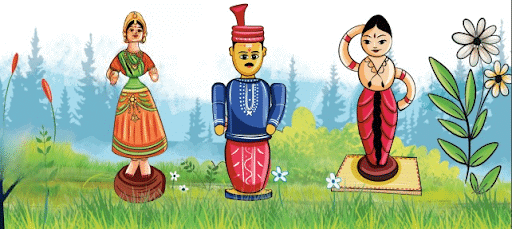
Let us Discuss
Page 133
Q1: What is the Ek Bharat, Shreshtha Bharat programme all about?
Ans: The Ek Bharat, Shreshtha Bharat programme is about promoting unity and understanding among people from different states of India, celebrating the country's diversity.
Q2: Why is this programme being conducted?
Ans: The programme is conducted to foster a sense of national unity and to strengthen the emotional bonds among citizens by highlighting the interconnectedness of various cultures and traditions.
Page 136
Q: On the basis of what the speakers said about the art forms, complete the table given below. Ans:
Ans: 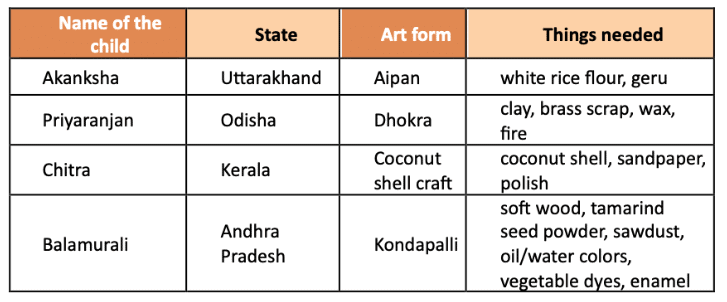
Let us think and reflect
Page 136
Q1: Fill in the blanks to complete the following sentences.
(a) The designs for Aipan are taken from ________________ and ________________.
(b) Dhokra metal craft is very old because it is ________________ old.
(c) A base is needed for coconut shell craft to make it ________________.
(d) Softwood, ________________, and colors are used to make Kondapalli toys.
Ans: (a) The designs for Aipan are taken from nature and cultural traditions.
(b) Dhokra metal craft is very old because it is 4000 years old.
(c) A base is needed for coconut shell craft to make it smooth.
(d) Soft wood, makku-a paste of tamarind seed powder, sawdust, and colors are used to make Kondapalli toys.
Q2: Why does Akanksha’s family make Aipan?
Ans: Akanksha’s family makes Aipan during family functions and festivals as part of their cultural tradition.
Q3: In Dhokra, why does wax come out of the small openings?
Ans: In Dhokra, the wax comes out of the small openings when the clay figure is fired, creating a hollow space that is later filled with molten brass.
Q4: What is common in the toys made in Balamurali’s village and coconut shell craft in Kerala?
Ans: Both crafts involve creating objects from natural materials and are part of traditional art forms passed down through generations.
Let us learn
Page 137
Q1: Priyaranjan, Chitra, and Balamurali share how artworks of their states are made. They use some words to show the order of making it. Those words are given in the box below. Now, use some of these words to complete the paragraph given below. Use one word only once.

Now, use some of these words to complete the paragraph given below. Use one word only once.
How I Get Ready for School
(i) ____________ I get up and go to take a shower. (ii) ____________, I wear my school dress. (iii) ____________, I eat my food. (iv) ____________, I wear my shoes. (v) ____________, I pick up my bag and go out of my home.
Ans: How I Get Ready for School
(i) First, I get up and go to take a shower. (ii) Then, I wear my school dress. (iii) Next, I eat my food. (iv) After that, I wear my shoes. (v) Finally, I pick up my bag and go out of my home.
Q2: The children from different states each speak about one art form from their state. When they speak, they use the first form of the verb. It shows something that happens regularly. It is called the present tense. With he, she and it, -s/-es is used with the verb to show the present tense. Make five sentences with the help of the words given in the table below. Use -s/-es wherever necessary. Two examples are given 
Ans:

Let us listen
Page 138
Q1: Listen to the description of gakkad bharta and complete the notes given below. (refer to page 162 for transcript)
Gakkad Bharta
(a) Name of the speaker: __________________________
(b) The town of the speaker: __________________________
(c) The state he belongs to: __________________________
(d) The name of the food item: __________________________
(e) Vegetables roasted for bharta: __________________________
Ans: (a) Name of the speaker: Sushil
(b) The town of the speaker: Jabalpur
(c) The state he belongs to: Madhya Pradesh
(d) The name of the food item: Gakkad Bharta
(e) Vegetables roasted for bharta: Brinjal and tomatoes
Q2: Complete the flowchart on how to make gakkad bharta. Ans:
Ans:
Let us speak
Page 138
Q1: Speak about a local art form of your region. It can be anyone out of painting, rangoli, metal craft, embroidery, music, dance or drama. Remember to include:
- the name of the art form
- what things do they need for it
- how do they make/present it
Ans: I know about the art form called Pattachitra. Pattachitra is a traditional painting style from Odisha, India. They need cloth, natural pigments, and a fine brush. The cloth is first treated with a mixture of chalk and gum to create a smooth surface for painting.
To make it, first, they prepare the cloth by coating it with the chalk and gum mixture and letting it dry. After that, they sketch the outlines of the design using a fine brush. Next, they fill in the colours using natural pigments derived from minerals and plants. Then, they add intricate details and patterns to the painting.
At last, they apply a layer of lacquer to protect the painting and give it a glossy finish. Pattachitra paintings often depict mythological stories, folk tales, and religious themes, with vibrant colors and detailed ornamentation, making them a unique and cherished art form of Odisha.
Q2: You may use the words given below when you speak.
- I know about the art form called..…
- They need…….
- To make it, first … after that … next … then … at last …
Ans:
- I know about the art form called Pattachitra which is a classical painting form that originated in the state of Odisha. Pattachitra is painted on cloth, which is specially prepared by coating it with a mixture of tamarind seed paste and chalk. This is then dried and polished to create a smooth surface.
- The colors used in Pattachitra are natural and derived from various sources. To make it, the artist begins by sketching the outline of the picture with a fine brush using black or red colors. The painting is given a final coat of lacquer to protect it and give it a glossy finish.
- This is known for its intricate details and mythological narratives, particularly those related to Lord Jagannath, an incarnation of Lord Vishnu. The themes often include stories from The Ramayana, Mahabharata, and other Hindu epics and folklore. Pattachitra is not just an art form but a testament to the rich cultural heritage of Odisha, showcasing the skill and creativity of its artisans.
Let us write
Page 139
Q: You heard children from different states speak about the art forms from their state. Discuss in pairs which art form you liked the most. Now, write a paragraph with five sentences giving your reasons for liking it.
Ans: Among the various art forms discussed, I found Pattachitra from Odisha the most captivating. The intricate detailing and vibrant natural colors used in these paintings are truly mesmerizing. I appreciate how each artwork tells a story, often depicting scenes from Hindu epics, which adds a rich cultural and narrative depth. The dedication and skill required to prepare the canvas and paint with such precision demonstrate the artisans’ expertise and passion. Overall, Pattachitra beautifully combines artistry, tradition, and storytelling, making it a truly remarkable and appealing art form.
Let us explore
Page 139
Q1: Madhubani painting is a traditional art form from Bihar. The artists use natural colours to make them on the walls of their houses. You can also make and use natural colours as given below.
- yellow from haldi
- green from leaves
- red from red flowers/geru/sindoor
- orange from flowers
- blue from neel/indigo powder
Given below is a Madhubani painting. Colour it with natural colours or any other colour.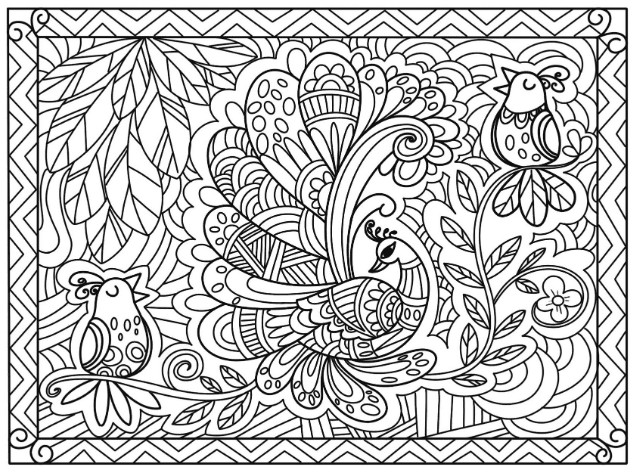 Ans:
Ans:
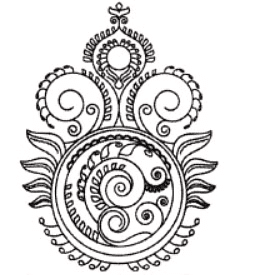
Q2: Ek Bharat, Shreshtha Bharat Programme
Bharat has diverse languages, cuisines, music, dance, theatre, movies and films, handicrafts, sports, literature, festivals, paintings, sculptures, etc. The Ek Bharat, Shreshtha Bharat program aims to enhance interaction and promote mutual understanding between people of different states/UTs through the concept of state/UT pairing. This is to celebrate the unity in diversity and strengthen the emotional bonds between its citizens. The vision is to enable people to develop a sense of common identity by sharing best practices and experiences. The program aims to contribute to nation-building by highlighting the interconnectedness between various cultures and traditions.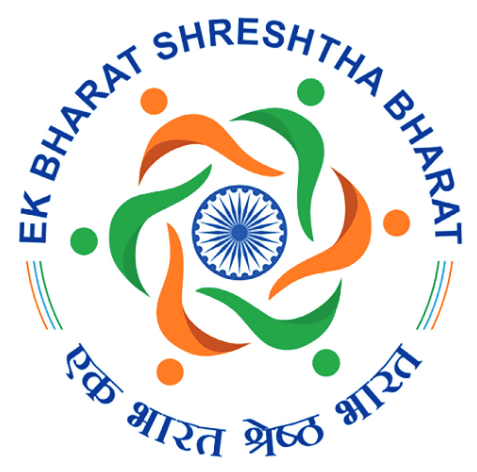 Ans: The Ek Bharat, Shreshtha Bharat Programme enhances interaction and mutual understanding between different states/UTs of India. It celebrates unity in diversity by fostering emotional bonds and sharing cultural practices. The initiative aims to build a common identity and contribute to nation-building through cultural interconnectedness and shared experiences.
Ans: The Ek Bharat, Shreshtha Bharat Programme enhances interaction and mutual understanding between different states/UTs of India. It celebrates unity in diversity by fostering emotional bonds and sharing cultural practices. The initiative aims to build a common identity and contribute to nation-building through cultural interconnectedness and shared experiences.
|
66 videos|531 docs|71 tests
|
FAQs on Hamara Bharat- Incredible India! NCERT Solutions - English for Class 6
| 1. What are the main features of Incredible India as described in the article? |  |
| 2. How does the article describe the significance of festivals in Indian culture? |  |
| 3. What role does tourism play in promoting Incredible India? |  |
| 4. Can you explain the importance of unity in diversity as mentioned in the article? |  |
| 5. What are some of the major tourist attractions highlighted in the article? |  |





















